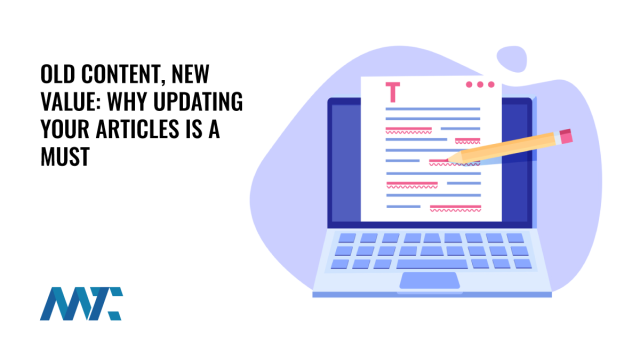Your work doesn’t end when an article is published. Maintaining a content library is just as crucial as creating new content. If a website has been around for years, chances are, older articles may contain outdated information, broken links, or references to products and services that no longer exist. Neglecting these issues can frustrate readers, erode credibility, and hurt search engine rankings. For publishers and businesses alike, maintaining content should be an ongoing effort to ensure accuracy, authority, and an improved user experience.
Over the years, my site has accumulated more than 5,000 articles. Several years ago, I undertook the daunting but necessary task of systematically reviewing and updating older posts. The reasoning was simple: when someone lands on an article from a search engine or internal link, they should find helpful, up-to-date information—not a relic of the past that no longer holds relevance. Outdated content leads to a poor user experience (UX) and diminished trust.
By refreshing and maintaining my content, I have seen dramatic improvements in key performance metrics, including a 36% increase in time-on-site and sustained double-digit YoY growth in search traffic.
The Importance of Content Maintenance
Maintaining content isn’t just about fixing errors; it’s about preserving and enhancing the value of what’s already been created. Here are key areas that require attention:
Factual Accuracy: Products, companies, and technologies evolve, and so should content that references them. If an article highlights a tool that no longer exists, it’s crucial to update it with current alternatives or add a disclaimer indicating its outdated nature.
Grammar, Spelling, and Readability: Writing skills improve over time, and older articles may no longer reflect a publication’s current quality standards. Refining language, fixing typos, and improving structure enhance professionalism and readability.
Credibility and Trust: Transparency in content corrections matters. If factual mistakes are found, they should be acknowledged and corrected. Readers respect publishers who take responsibility for accuracy.
User Engagement: A well-maintained content library encourages deeper engagement. If readers know they can trust the information on a site, they are more likely to return, share, and interact with more content.
SEO Optimization: Search engine algorithms evolve, and older posts may not align with current best practices. Revisiting keyword usage, metadata, and internal linking can help maintain and improve rankings.
How to Approach Content Updates
My approach to content maintenance involves different levels of updates:
Factual Corrections: It must be updated if information is outdated or incorrect. If a reader points out an error, I correct it and acknowledge their contribution in the comments, reinforcing engagement and trust.
Grammar and Style Improvements: These silent edits enhance readability and professionalism without changing the meaning of the content.
Outdated Product or Service Mentions: If an article references a discontinued product, I update it with a relevant alternative or note its obsolescence.
SEO and Formatting Enhancements: As search algorithms change, I revisit older posts to optimize for current best practices, improving visibility and performance.
The Business Case for Content Maintenance
For businesses, keeping content updated is not just about credibility—it’s a strategic move. Outdated information can mislead potential customers, result in lost sales, or damage brand reputation. Whether it’s a blog, a knowledge base, or product pages, periodic reviews and updates should be built into the content strategy.
Publishing is not a one-and-done process. A website is a living, breathing entity that requires care and attention. Regular content audits and updates ensure that past efforts continue to deliver value, reinforcing authority, trust, and user satisfaction. As I have experienced firsthand, investing in content maintenance leads to measurable improvements in engagement and search performance—proof that a well-kept content library is a powerful asset in digital publishing.
Disclaimer: This was an article originally written in 2008 that I’m refreshing for 2025!
©2025 DK New Media, LLC, All rights reserved | Disclosure
Originally Published on Martech Zone: Old Content, New Value: Why Updating Your Articles is a Must

